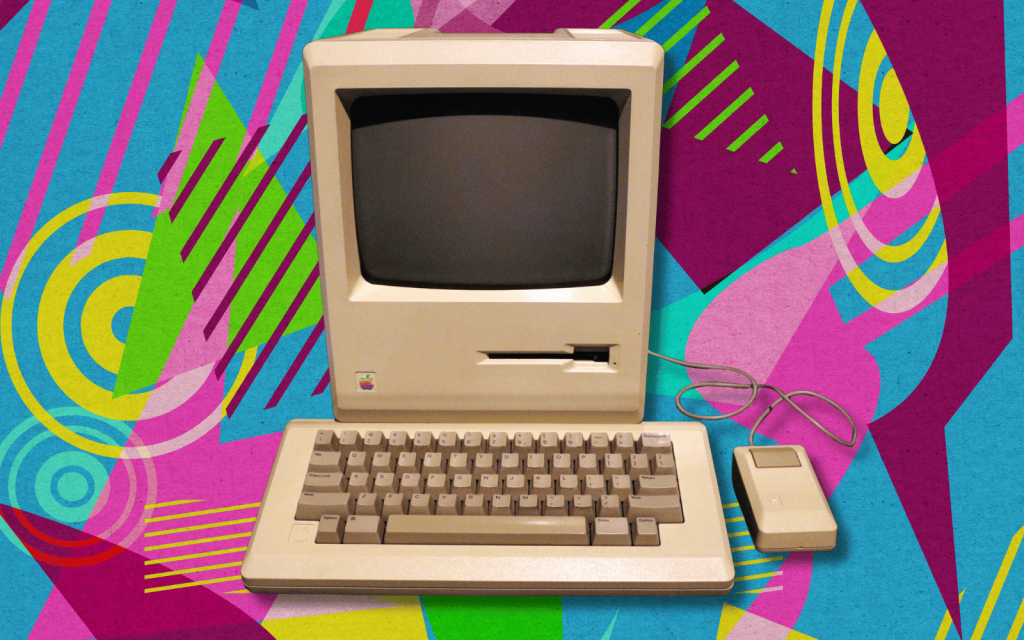It’s the first brick of Apple’s walled garden! A beige brick! With a tiny screen!
It was also revolutionary: the first successful all-in-one computer with a built-in display, controlled with a mouse, and with a graphical user interface rather than a command line. As Apple saw it, the company was defying conformity. Nowhere was this more evident than in its launch commercial, directed by Ridley Scott, which featured an athlete sprinting past drone-like workers before hurling a sledgehammer into a TV screen depicting Orwell’s Big Brother.
Ironic, given Apple’s famous penchant for control and locking things down…
Indeed. And the original Mac really was locked down. It had no internal storage, just 128k of RAM, a single disk drive that resulted in constant swapping, no official upgradability, a single-button mouse and no function or arrow keys – lest developers avoid the GUI and port existing PC apps to the platform as-is. Presumably, the idea was you’d be wowed at a new computing model and accept the compromises. In reality, the first Mac was underpowered and dismissed as a toy, and suffered from poor software support.
Sounds awful. So how come Apple didn’t die and is now a rampaging monster?
Because Apple was smart: it quickly released far more capable (and somewhat upgradable) models. Also, that original Mac really did offer something new, attracting people previously intimidated by computers. It appealed to the masses – even if the price meant the masses couldn’t afford one. And while it wasn’t the first GUI-controlled computer, it was the first that mattered and made the competition look like relics. The Macintosh was flawed and secured only a fraction of the market, but it defined an industry.




